Too Hungry to Cry
Published November 21, 2011
NORTHEAST KENYA — Barefoot children run giggling through the center of the village. The girls squeal in delight as a group of boys give chase. The toddlers laugh and run in circles, feeling like an important part of the game.
Sarah Salesa* watches her grandchildren play from her spot under the tree. Her tired eyes smile at the joyful sounds. It’s a relief to see them act like normal kids. Three days ago, she wasn’t sure any would survive the worst Horn of Africa drought and famine of her lifetime. Now, she sees a glimmer of hope.
The grandmother of 11 explains that just days ago, everyone was desperate for food or water. No one — not even her — could get up off the ground.
“When you are hungry and thirsty, you just sit. You can’t do anything. The hunger just eats away at your body,” the 56-year-old explains. “You can’t work. All you can do is sleep. The children don’t even have energy to cry.”
 A small shipment of food provided the lift the family needed, but under the smiles and tattered clothing, the signs of malnutrition are still here — protruding stomachs, orange-tinted hair or missing patches of hair and large, glassy eyes.
A small shipment of food provided the lift the family needed, but under the smiles and tattered clothing, the signs of malnutrition are still here — protruding stomachs, orange-tinted hair or missing patches of hair and large, glassy eyes.
Salesa is stick thin, as well. She routinely gives part of her own food ration to the children, contending that they are growing and she is old. She worries how she will feed them today, though. She is out of food.
“We never know if we will eat or not. When they (aid agencies) see the rains have come, I think they will definitely stop helping,” she says. In many areas around the Horn of Africa, this is the first rain in two years. “We don’t have seeds to plant crops. If they stop their assistance now, we could starve.”
What Salesa knows is that famines don’t turn on a dime. Bodies are depleted by months of malnutrition and stress. Before crops will grow, diseases will bloom. The United Nations warns there will be a second wave of deaths across Kenya, Djibouti, Ethiopia and Somalia as a result of this famine. At the moment 176 deaths are registered every day. The UN estimates the death toll may top 750,000 by the time the famine is brought under control.
This year’s extreme drought, combined with skyrocketing food prices and violent political strife, created what aid workers say is the worst food crisis in decades for the Horn of Africa. More than 800,000 Somalis left their homes and walked to refugee camps in Kenya or Ethiopia to receive help. However, millions — 12.5 million to be exact — who remain in their villages, like Salesa and her family, still are in dire need of food assistance.
A key goal of aid efforts is to keep people in their homes. If they move to camps for more than six months, they are statistically unlikely ever to return to their communities. Christian aid worker Don Sullivan* takes food relief provided by the Southern Baptist World Hunger Fund directly into the villages.
“What we’ve found is that while the government and the larger aid agencies have food distribution points, people often can’t get to them,” Sullivan explains. “The distribution is too far away to get to and walk back home with a 40 pound bag of food. Or they have to cross tribal conflicts and fighting.
“The reality is that the aid doesn’t always get to where it’s supposed to go,” he adds. “We decided if we wanted to make a difference, we had to start at the grassroots level — in the village.”
When Sullivan found Salesa’s village, all the families were in dire need. The aid worker shuttled several of the children to the hospital for treatment. One was Salesa’s 20-month-old grandson, Abdu.* He was in bad shape, weighing only 14 pounds, after his mother walked for days to find help.
 Salesa’s daughter, Elizabeth Qalicha,* and her husband roamed with the animals, searching for water. They had gone without food for a long time. When all their animals died, Elizabeth’s husband ran away, depressed over losing the family fortune. Elizabeth knew the only way for them to survive was to get to her mother’s house. Salesa welcomed them with open arms, but she didn’t have any food either.
Salesa’s daughter, Elizabeth Qalicha,* and her husband roamed with the animals, searching for water. They had gone without food for a long time. When all their animals died, Elizabeth’s husband ran away, depressed over losing the family fortune. Elizabeth knew the only way for them to survive was to get to her mother’s house. Salesa welcomed them with open arms, but she didn’t have any food either.
“We are family. The only way we will get through this hard time is if we stick together,” Salesa says. “Even if I have nothing to give, they are my children and I will care for them.”
The grandmother says the women put the children to bed at night, telling stories of how God supports and encourages them “even in times of hunger.” It was the only way to get through the days — lying listlessly, the hunger eating away at everyone’s bodies. Salesa told the children each night that she would be with them until the very last minute.
A few days later, Sullivan drove into the village.
Sullivan doesn’t just offer a ride to the hospital — he brings food! Through Baptist Global Response and the World Hunger Fund, his national partners distribute maize, beans and oil. It’s enough to feed a family of six for two weeks — or in Salesa’s case, one week.
 The aid worker also brings a special maize seed that matures in only three months’ time. Sullivan says the villagers who did not make the trek to the relief camps can start planting and take advantage of the rare rains. However, it still will be sometime in 2012 before they harvest any type of yield. In the meantime, BGR offers food relief to help bridge the gap.
The aid worker also brings a special maize seed that matures in only three months’ time. Sullivan says the villagers who did not make the trek to the relief camps can start planting and take advantage of the rare rains. However, it still will be sometime in 2012 before they harvest any type of yield. In the meantime, BGR offers food relief to help bridge the gap.
When the gunnysacks of food are unloaded from the truck, you don’t hear the usual celebration — whooping, singing and dancing — that surrounds most aid projects in Africa. Everyone has been hungry far too long.
Salesa stands in line and watches as the village elder doles out the food, meticulously counting each scoop per family. When a kernel of maize drops in the dirt, a mother in the crowd instructs one of the kids to pick it up and put it back in the sack. Nothing is wasted.
It isn’t until a pot of beans is boiling on an open fire, however, that Salesa smiles again. Her grandchildren will eat tonight.
“I never thought we would reach this time and still be alive,” Salesa says. “We thank God.”
*Name changed
For $30, you can feed a family in the Horn of Africa for two weeks. For more information, visit Baptist Global Response.
Susie Rain is a writer/editor who lived in Africa for more than a decade.


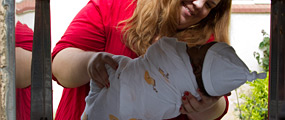



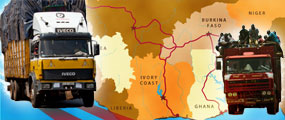
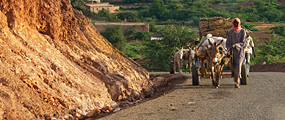
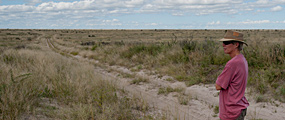


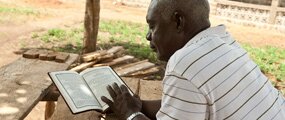



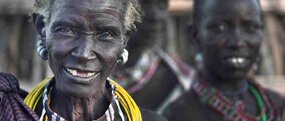
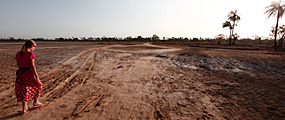
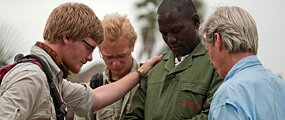

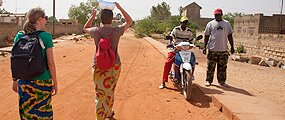
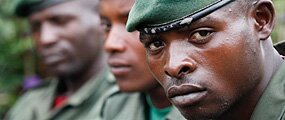
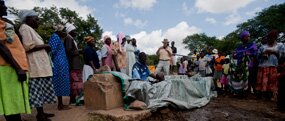


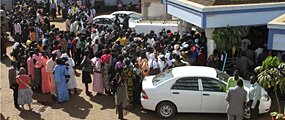




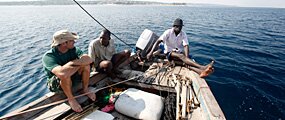
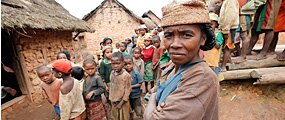

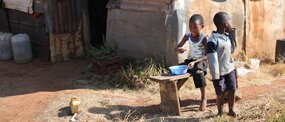

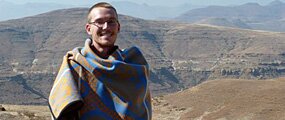



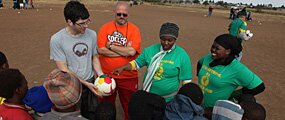


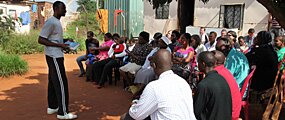



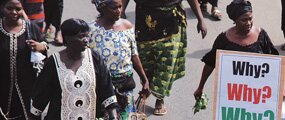
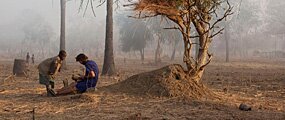
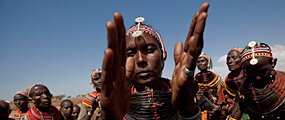

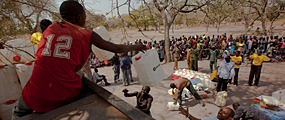
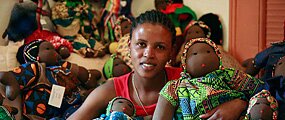
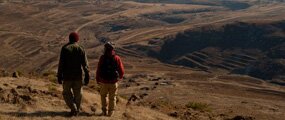
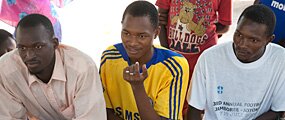
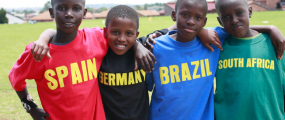
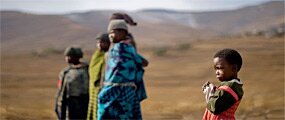
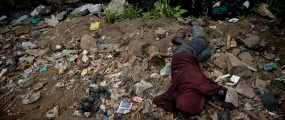
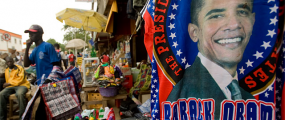


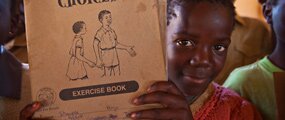














This is an amazing yet tragic story. All of you looking at this page in horror… TAKE ACT! Don’t just sit there on your butt! Figure out a way to solve the problem. We need to act now! Not figure out a way to help, you need to just help. C’mon guys… I’m waiting to see what you can do.